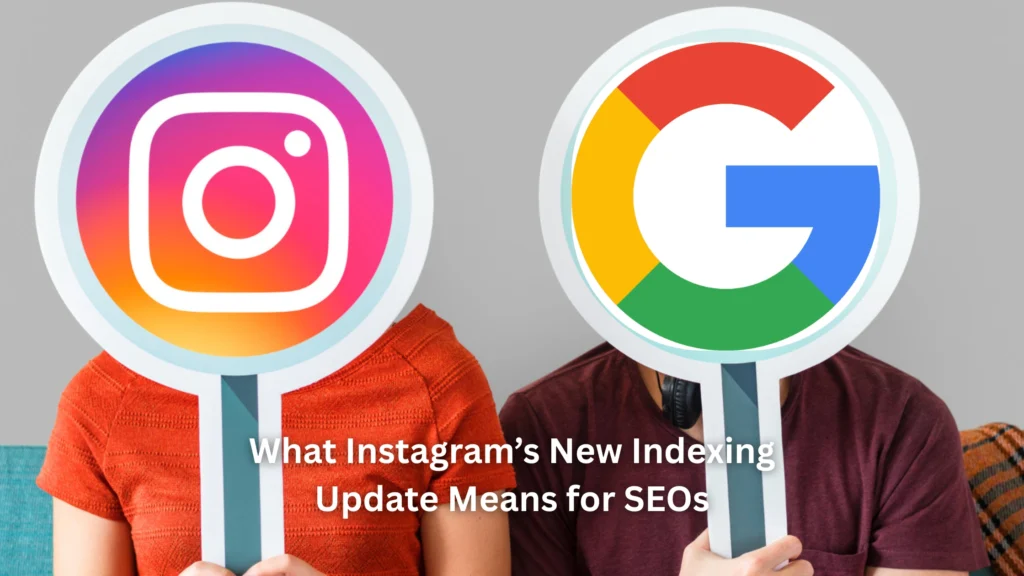 Instagram just changed the game.
Instagram just changed the game.
For years, your posts would die in 48 hours, buried in the feed, never to be seen again. But starting July 10th, 2024, your public Instagram content is now being indexed by Google.
Yes! your reels, carousels, photos, and captions can show up on search. This update isn’t just minor. It could completely shift Instagram strategies for creators, brands, and marketers. If you’re an SEO, this is the moment to pay attention.
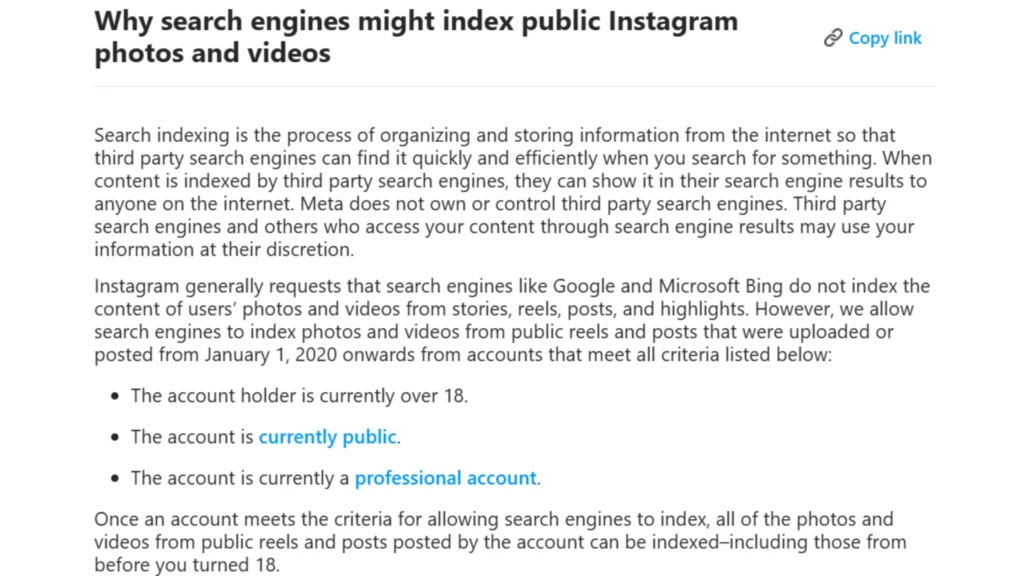
Let’s break down what’s happening, why it matters, and how you can optimize for it.
So… Hasn’t Instagram Always Shown Up on Google?
Kind of. Until now, only Instagram profiles have been indexed.
If you searched for “Nike Instagram” on Google, you’d see their profile link — but not their individual posts. Instagram kept posts inside its own app, often described as a “walled garden.”
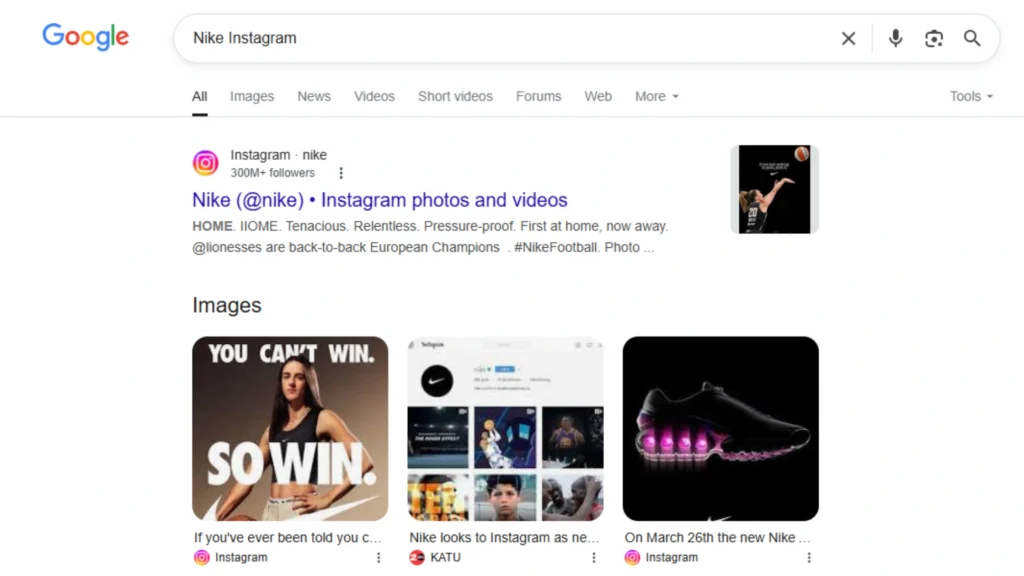
Discovery came through Reels, the Explore tab, hashtags, and shares. Google search? Not really part of the Instagram playbook — until now.
Why This Is a Big Deal
Google processes over 8 billion searches a day. People don’t just scroll here — they search with intent. They’re actively looking for answers, products, how-tos, and inspiration.

Until now, Instagram content had zero long-term discoverability unless it went viral. But this change brings evergreen SEO potential to Instagram — just like YouTube, TikTok, and blogs.
And for creators and businesses? That means your post from last year could start driving traffic today.
What Content Is Now Being Indexed?
Here’s what Instagram says will now be visible on Google:
- Reels
- Photo posts
- Carousels
- Captions
- Alt text
- Geotags
But some things won’t be indexed:
- Stories
- Highlights
- Private profiles
- Personal accounts
You need a creator or professional business account to benefit. Instagram also says posts from as far back as January 1, 2020, may start showing up in search.
What This Means for Evergreen Instagram SEO
This is the biggest shift we’ve ever seen on Instagram.
Until now, Instagram has been all about fast, trend-driven content. You’d post something, get likes for a day or two, and then it’s gone. If it didn’t go viral or hit the Explore page, it had a short life.
But that’s changing.
Instagram is now allowing Google to index individual posts. That means your content, whether it’s a reel, carousel, or single image, can now show up in Google search results.
This opens the door for evergreen content on Instagram. Evergreen means:
-
It doesn’t rely on trends.
-
It stays relevant over time.
-
People can discover it weeks, months, or even years later through a search.
Why this matters for SEOs
As SEO professionals, we already know how valuable evergreen content is. It’s the kind of content that keeps driving traffic long after it’s published.

The same rules that apply to ranking a blog post now apply to Instagram:
-
Solve a real problem: Whether you’re talking about website maintenance, SEO tips, or common tech issues, make sure your content helps someone.
-
Use keywords people are searching for: Just like you would optimize a blog post for search terms like “website maintenance services in Toronto“, you can now use those same phrases in Instagram captions, alt text, and videos.
-
Structure your content clearly: Metadata matters. That includes alt text, captions, location tags, and even what you say in reels. This helps both Instagram and Google understand your content.
How Google Indexing Actually Works
Think of the internet as a giant city full of websites.
Google sends out crawlers — little bots that visit sites, collect information, and bring it back to Google HQ, a magical library that files and ranks everything.

When someone searches, Google digs into that library and finds the most relevant content in milliseconds.
For years, Instagram didn’t let crawlers go past the front gate. Now? They’re opening the doors.
How to Optimize Your Instagram for Google Search: Step-by-Step Guide
1. Add Descriptive Alt Text
Alt text helps Google and Instagram understand the visual content of your post. It’s originally designed for accessibility, but it’s also used by search engines.
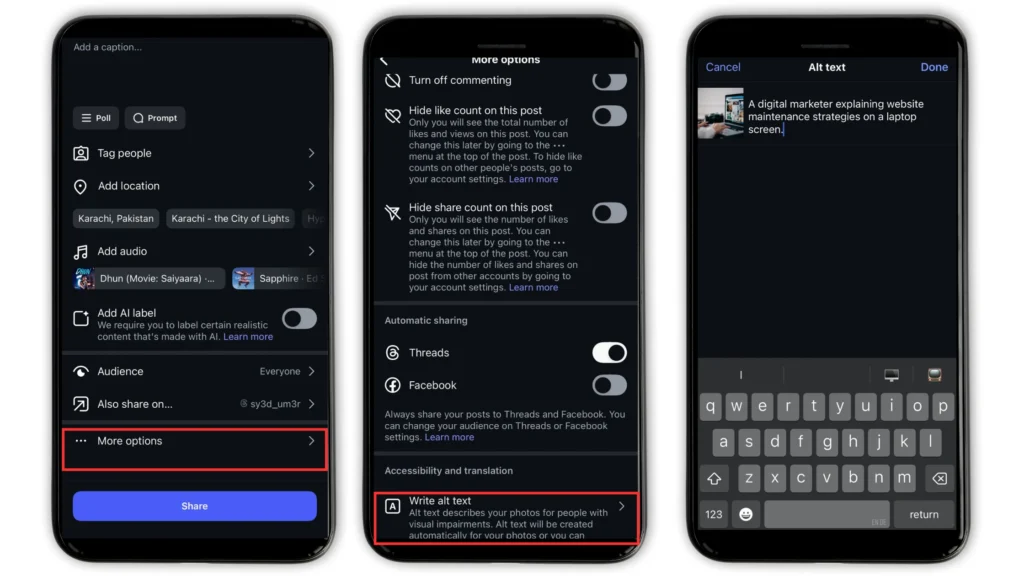
How to do it:
-
Start creating a post as usual (photo or carousel).
-
When you reach the final screen before posting, tap “Advanced Settings” (at the bottom).
-
Tap “Write Alt Text.”
-
Describe what’s happening in the image using natural language and keywords.
-
Example: “A digital marketer explaining website maintenance strategies on a laptop screen.”
-
2. Write Keyword-Rich Captions
Captions are the most indexable text on your post. This is where Google and Instagram both pull data to understand what the post is about.
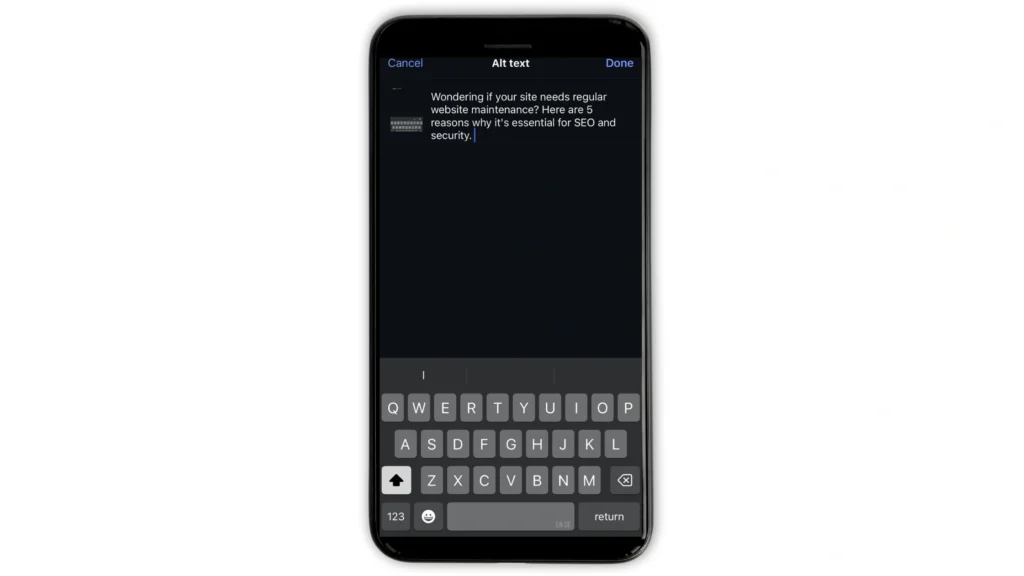
How to do it:
-
Write a longer-form caption instead of 1–2 emoji or short phrases.
-
Use keywords that reflect the topic of the post.
-
Example: “Wondering if your site needs regular website maintenance? Here are 5 reasons why it’s essential for SEO and security.”
-
-
Naturally insert questions, how-tos, or location mentions.
-
“Toronto website maintenance” instead of just “here.”
-
“Website support for small businesses” instead of “tech stuff.”
-
3. Speak Clearly in Reels
Instagram and Google can transcribe audio. What you say can become searchable — so treat your script like a blog headline.
How to do it:
-
When recording a reel, speak clearly and stay on-topic.
-
If you’re using AI voiceovers or text-to-speech, write a script with SEO in mind.
-
Use phrases people Google.
-
Example: “Here’s how to maintain your website to improve speed, SEO, and security.”
-
4. Use Smart Hashtags
Hashtags still help categorize content — especially for indexing and algorithm signals.

How to do it:
-
Choose 3 to 5 focused hashtags that clearly describe the post.
-
Example for a web service post: #WebsiteMaintenance #WebsiteSupportToronto #WordPressUpdates
-
-
Avoid overly generic ones like #marketing or #cool — they don’t help with indexing.
-
Think topic + location or problem + service.
5. Geotag When It Makes Sense
Geotagging helps Instagram and Google understand where your content is relevant — critical for local SEO.
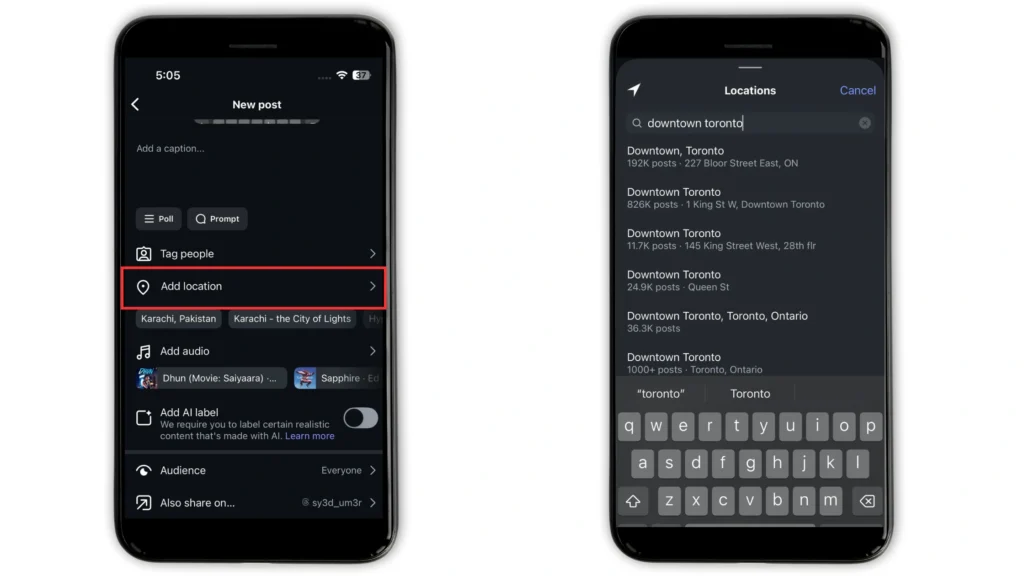
How to do it:
-
Before posting, tap “Add Location.”
-
Choose the exact city, venue, or neighborhood.
-
Example: “Downtown Toronto” if you offer local website maintenance services
-
-
For agencies and freelancers, always tag your physical location or service area.
6. Optimize Your Bio and Username
Your profile name and bio are both indexed and can help your entire account rank.
How to do it:
-
In your profile settings, edit the Name field to include relevant keywords.
-
Example: “Awwab Khan | Website Maintenance Specialist”
-
-
In your bio, describe what you do, who you serve, and where.
-
Example: “Helping small businesses in Toronto with secure and optimized website maintenance. DM for a free audit.”
-
7. Revisit and Optimize Old Posts
Instagram says posts from January 1, 2020 onward may be indexed. You can breathe new life into old content.
How to do it:
-
Go to your older, high-performing posts.
-
Tap the three dots → Edit.
-
Add or update the caption with better keywords.
-
Add alt text if missing (go to Advanced Settings when editing).
-
Update hashtags and location tags if needed.
Why SEOs Should Jump on This Now
Instagram is evolving into a platform that supports search-driven discovery, similar to how people use Google, TikTok, or YouTube. Users can now search for content using keywords, and posts are starting to show up in both Instagram search results and Google.
For SEO professionals, this opens a new door.
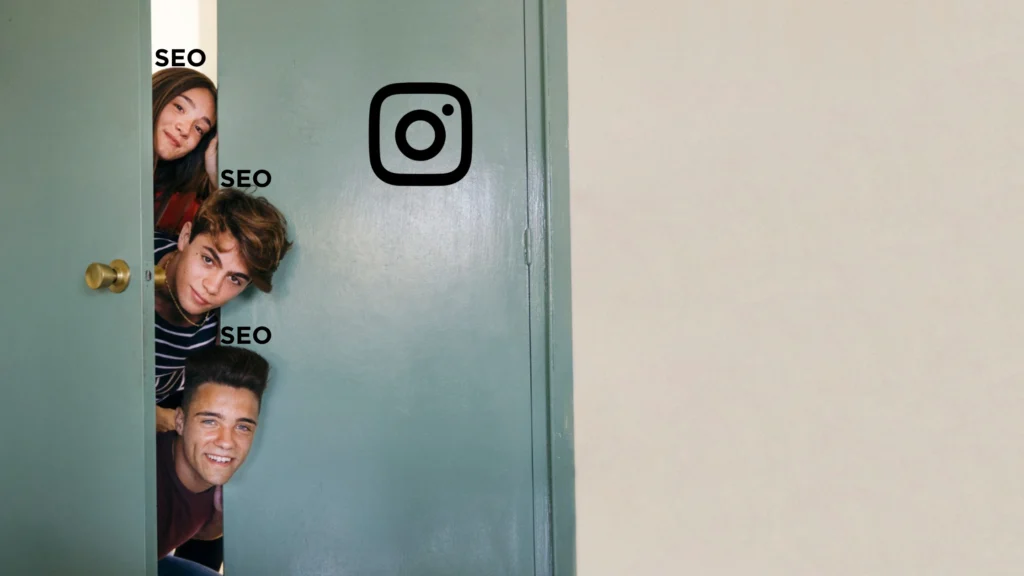
Until now, Instagram has mostly been about short-term engagement. Once a post dropped out of the feed, it lost visibility. Now, optimized posts can stay discoverable and continue bringing in traffic over time.
This shift gives early adopters a clear advantage. Most businesses are still posting without considering search. By applying SEO principles like using relevant keywords in captions, writing content that answers specific questions, and including descriptive alt text, you can create Instagram content that ranks and performs long after it’s posted.
The window of opportunity is now. Those who start optimizing today will see stronger long-term results compared to those who wait.
Final Thoughts
Instagram is no longer just a social feed. It is becoming an SEO-friendly platform. If you want long-term visibility, leads, and growth, now is the time to treat Instagram like a search engine for content.
Adjust your strategy to match this shift. Use keywords that reflect real search intent. Apply the same SEO mindset you would use for Google.
Change is already happening. The sooner you adapt, the better your results will be.





